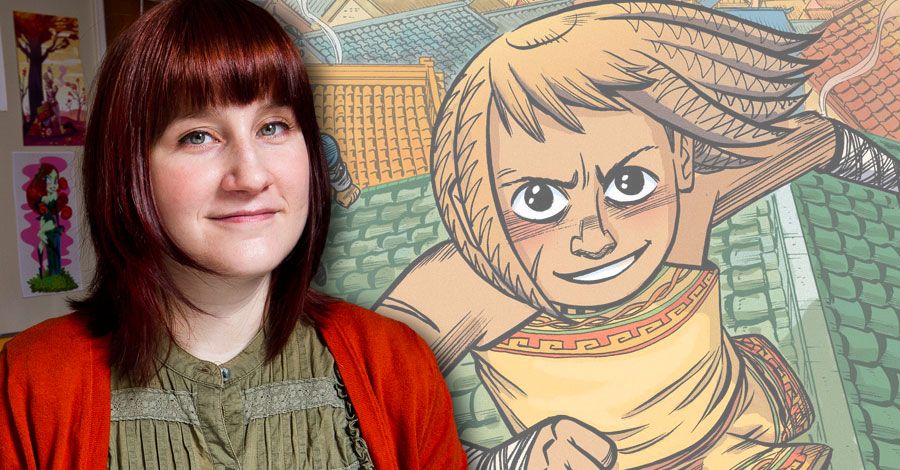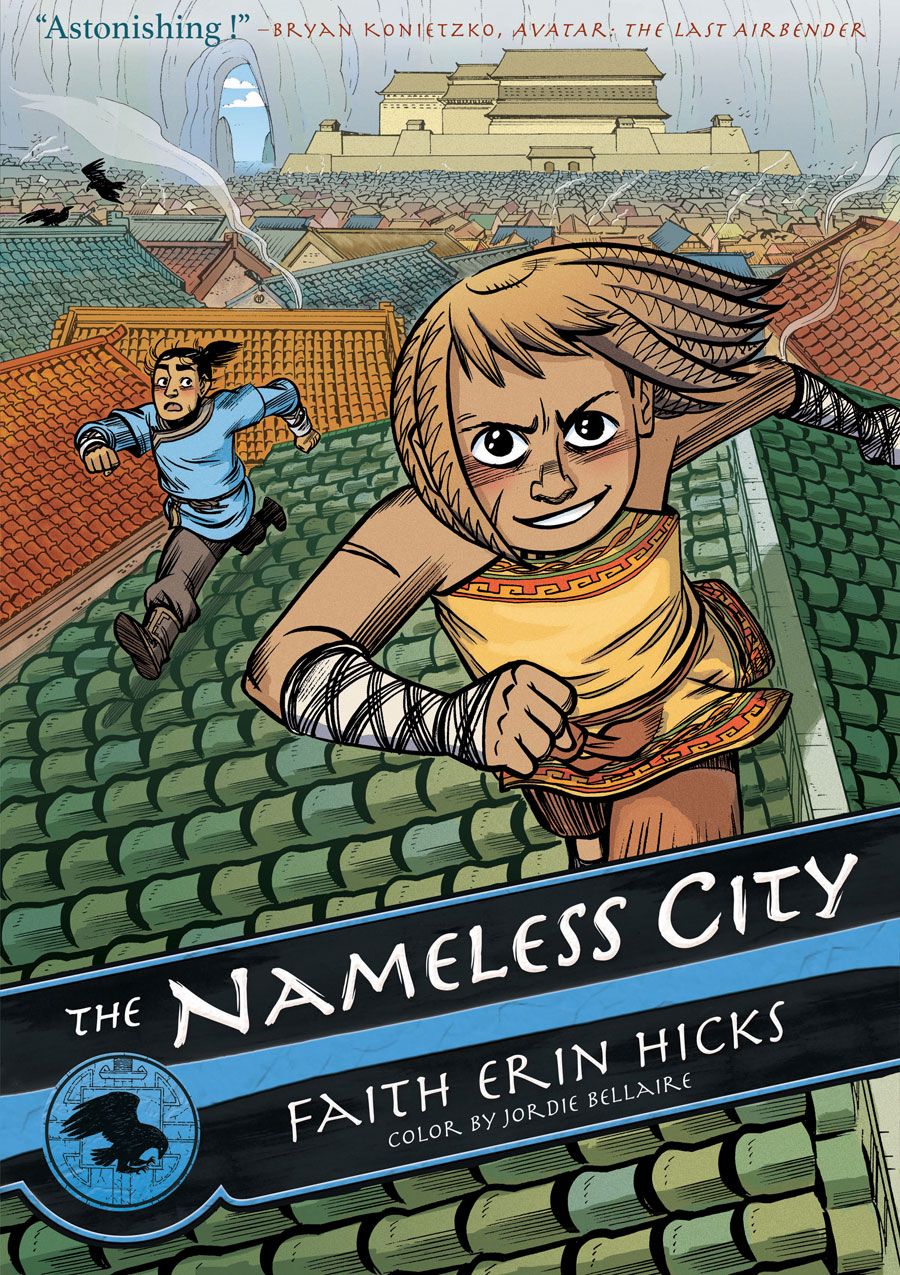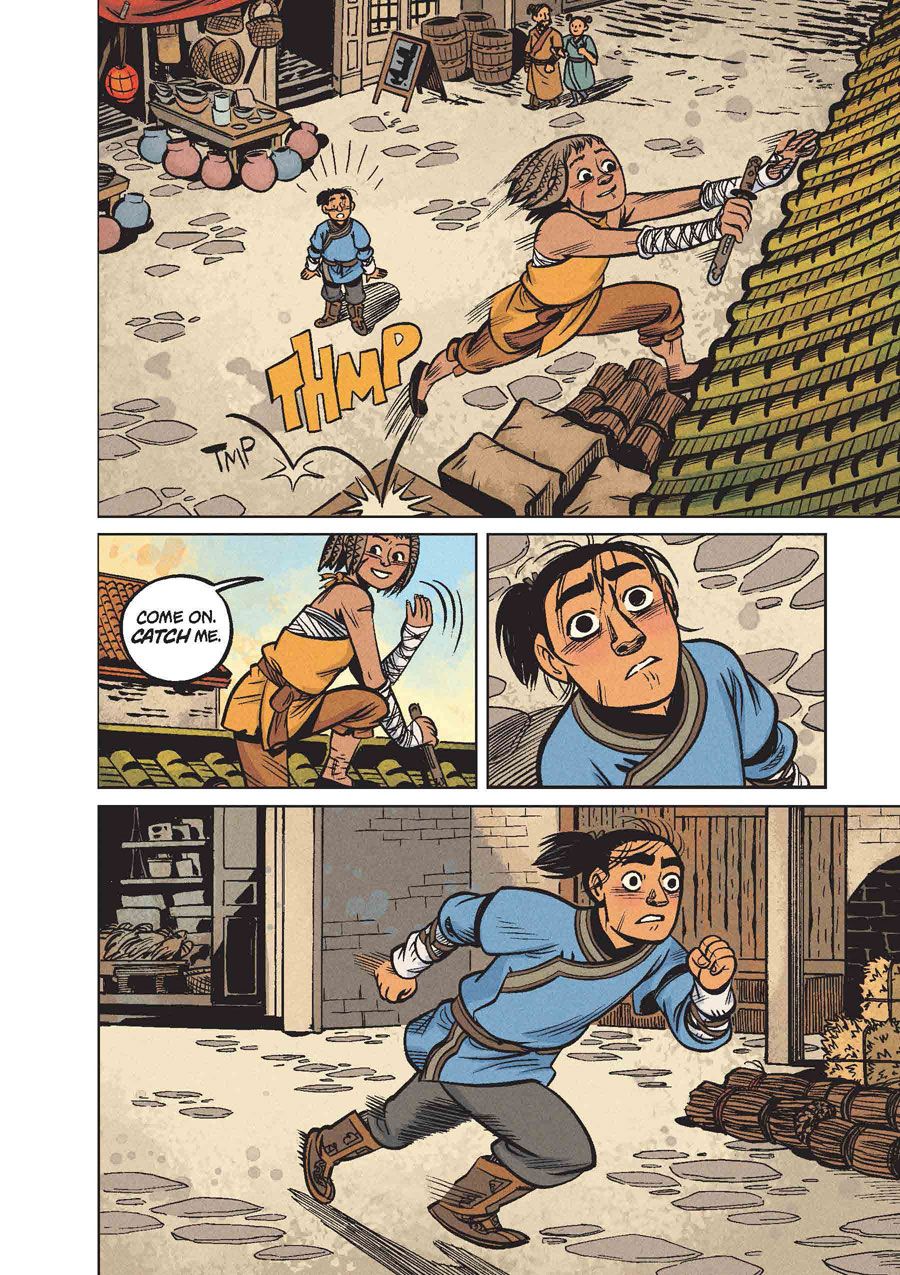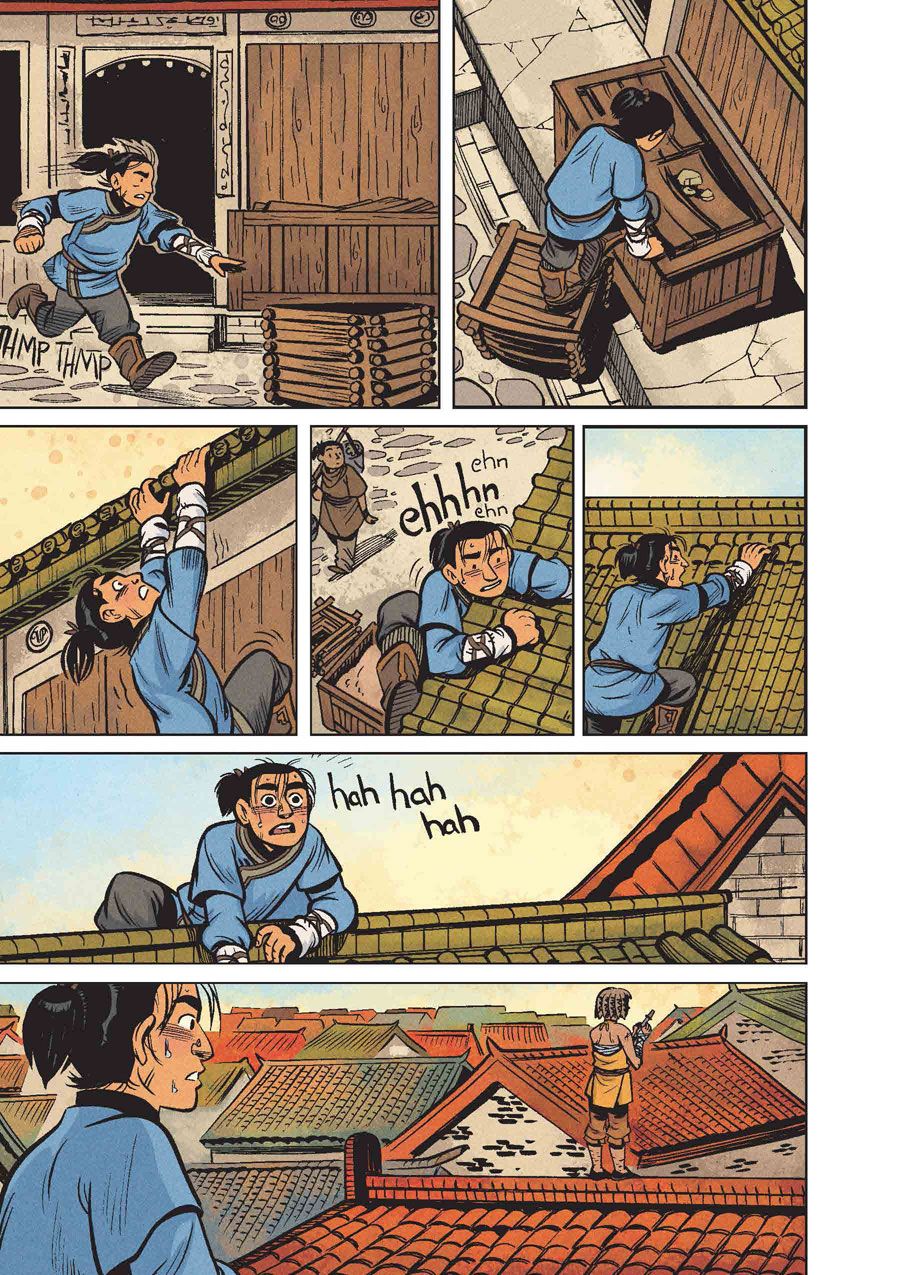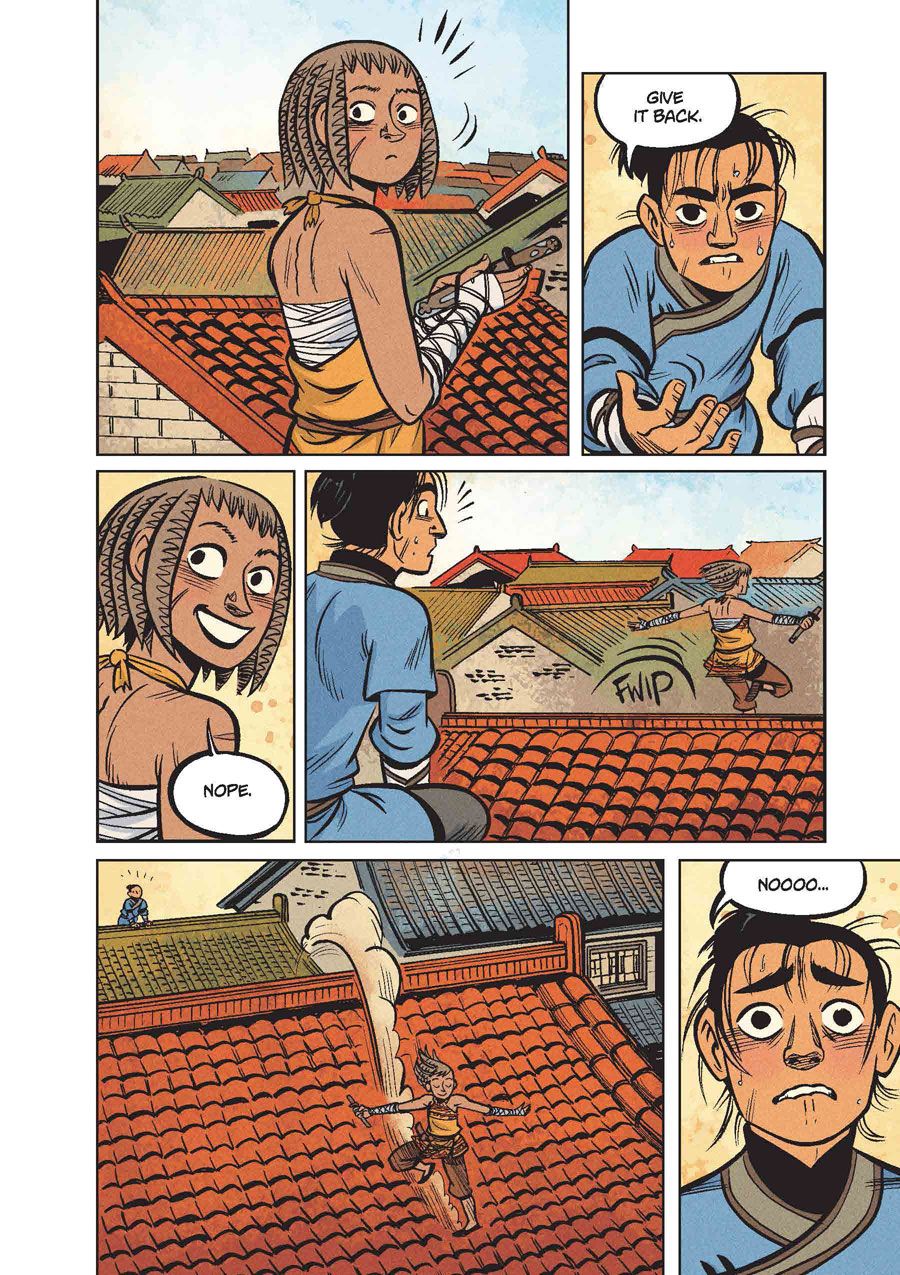Faith Erin Hicks' latest graphic novel is set in a city that passes from the hands of one conquering people to another. Currently occupied by the Dao, "The Nameless City" is enjoying a moment of peace and some prosperity, but not everyone is satisfied with the Dao's rule.
When Kaidu, the son of a respected Dao general, visits the city for the first time, he encounters a young local who calls herself Rat. Despite Rat's hatred of the Dao, the two strike up an unlikely and difficult friendship. Now, as Kaidu discovers the city through Rat, she in turn uncovers a conspiracy against her oppressors -- who may be more nuanced than she realized.
CBR News spoke with Hicks about bringing "The Nameless City" to life, her story's real-life antecedents, getting to dig into a deeper world with many stories to tell, and how people aren't always what we expect.
CBR News: Were there any particular cities, real or mythological, that inspired "The Nameless City?"
Faith Erin Hicks: The setting in "The Nameless City" is inspired by the Yuan Dynasty of 13th century China. While there was no direct inspiration from any particular city during that time, I used historical names for Beijing from that era as some of the many names for the Nameless City. Physically a lot of the design for the City is based on Fenghuang, an ancient, well preserved city that dates back hundreds of years.
The Nameless City is perpetually conquered. For the Named, the city's residents no matter who controls the city, does the name on the palace impact them in their day-to-day existence?
For the most part, the natives probably try to ignore the conquerors and go about their lives. The City seems to change hands every thirty or forty years as nations rise and decline, so someone could live a good chunk of their life in relative peace, only to have a war on their doorstep as they approached middle age. We don't really learn a lot about the history of the various conquerors who have ruled the City, although I can imagine there are good and bad ones.
I wanted it to be pretty obvious that the Dao aren't necessarily bad rulers of the City, but they're still an outside, occupying force. Their rule has meant oppression for some people in the City, and a flourishing of business and trade for others. It really depends on who you talk to in the City, whether the occupation affects someone for good or ill.
It unfolds slowly, but there is an interesting political conflict among the tribes that battle for control of the Nameless City. What is it that makes this locale such a hot commodity?
There are three "Great Nations" referred to in the book (not tribes, although there are tribes within the Dao Empire), and they've engaged in a tug of war over the City for hundreds of years. There are many other nations in the world as well, but they can't compete with the military might of the three Great Nations, so they just have to tolerate the conflict if they want to do trade in the Nameless City. Trade is why the City is so valuable; I read a few books on the Silk Road and found it really fascinating how all these different people interacted, how people who might be enemies worked alongside each other under the banner of commerce. I think of the Nameless City as the Silk Road in concentrated form. It's a valuable seaport, a city you need to pass through in order to trade with the rest of the world, so it's incredibly important to people who need to make a living.
Kaidu is the son of a respected general in the Dao military and was raised outside the City. As such, he's somewhat sheltered -- he and Joah know different versions of the Dao's assault on Yisun, for example. He's new to the City, but he can't get enough of it. What draws him into the City?
I don't want to give away too much, because Kai's motivations for coming to the City are something that unfold over the course of the three books, but initially, it's curiosity that draws him to the City. It's a larger-than-life place, like, say moving to Toronto or New York from a small town. It's a vast, multicultural city that is unlike anywhere else in Kai's world, and the possibilities of such a place are exciting. Also, on a more basic level, he wanted to meet his dad, who he'd apparently never met before.
The real question is, what draws Rat to Kaidu? The Dao inflicted a serious tragedy on her, and although she's initially rough on Kaidu, she's fair with him. Is she simply trying to exploit him for food, or is there more to her motives?
I think she's showing off. She's proud of her physical abilities, and it's fun to show off when you're good at something. And along comes this other kid who thinks she's pretty impressive, even if she is kind of a jerk, so why not continue showing that kid how great you are? The food is totally her main motivation, but eventually she gets more invested in teaching Kai what's the City's really like, which leads to some internal conflict for her because she typically sees all Dao as evil.
Though you're not really known for creating sequels to your graphic novels, you're already working on a second "Nameless City" book. How early in the development of this one did you realize this world had more layers you wanted to peel back and explore?
I always knew this would be a longer story than my other books. Originally, I pitched it as four books, but it sold as three, and I think the story's better for it. There's something really perfect about that three-book arc, and okay, I kinda wanted to pretend I was doing "Star Wars" (original trilogy, please).
It took me a long time to beat the story into shape; I've never done anything this ambitious or plot-heavy. It was kind of scary, but really exciting. It's such a rare experience to get to work on a multiple-book story, to really dig into character development and world-building. Originally when I started working on the comic, it was just an idea to noodle around with after work. I just liked drawing the characters and trying to figure out their designs. I think I started hoping it would be my next project with First Second after I finished "Nothing Can Possibly Go Wrong," a graphic novel I drew based on a book by Prudence Shen, which was published back in 2013. I'd drawn a couple books that were set in contemporary high school environments, and really wanted to break out of that genre and try something new. I decided the best way to do that would be to break my wrist drawing historical Chinese cities. I have had the occasional moment of regret, I admit.
We see the Dao as being perhaps reasonable and fair-minded about trying to recognize the Named and find a solution that benefits the other conquering tribes, but we also see the tragedy of their occupation in Rat. Will the second book, "The Stone Heart," show more of the ups and downs of the conquerors as well as the conquered?
Yes, definitely. It was important to me not to portray the Dao as complete villains. Some of them are awful people, but some are legitimately concerned for the future of the City. I also wanted to portray their culture as something that was in the midst of evolving, transitioning from a warrior-based patriarchy to something more democratic. You'll see more about them in the second book, as well as learn more about Rat's history.
The Nameless City is available from First Second in early April.

